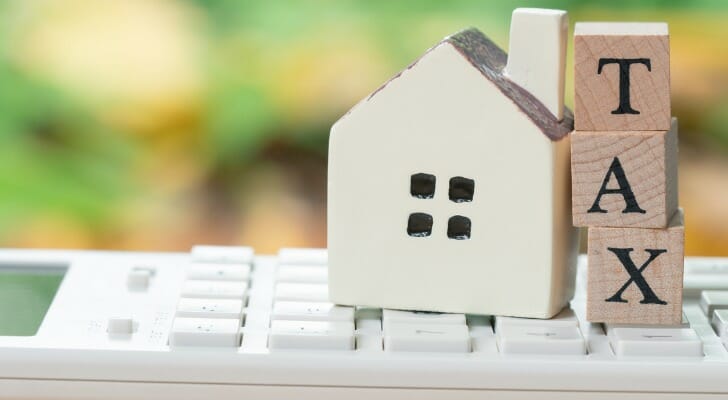When you sell a capital asset that has undergone depreciation, you may realize a gain if the sale price exceeds its adjusted value after accounting for depreciation and other deductions. If this occurs, the IRS requires you to report the difference as taxable income. This effectively allows the IRS to take back the depreciation you claimed, since the asset increased in value by the time you sold it.
A financial advisor can offer hands-on guidance when it comes to lowering your tax liability on your investments.
Understanding Depreciation
Before we delve deeper into recapture, you should first understand how depreciation works.
Businesses or taxpayers often use depreciation to write off the value of a fixed asset they’ve purchased. This allows taxpayers to benefit gradually and save on taxes. The value that the asset loses represents its depreciation expense. If the asset’s value slowly decreases over time, rather than instantly, you can still earn revenue from it. This enhances net income and makes your investment more profitable.
However, the IRS determines the depreciation schedule, the deduction rate and the deduction term. The depreciation schedule represents the time frame a taxpayer plans to write off an asset’s value. But the taxpayer determines the salvage value, which indicates the estimated value of an asset once its depreciation schedule has ended.
Some companies estimate an asset’s salvage value to be $0 by the end of its term. However, businesses may also estimate a higher salvage value. This could either be for bookkeeping records following the depreciation expense period or because a company wants to sell the asset’s remaining value.
What Is Depreciation Recapture?
Depreciation recapture allows the IRS to collect taxes on the financial gain a taxpayer earns from the sale of a depreciable asset, such as rental properties, equipment or even furniture. Once an asset’s term has ended, the IRS requires taxpayers to report any gain from the disposal or sale of that asset as ordinary income.
Depreciation Recapture for Properties vs. Equipment
The depreciation recapture conditions for properties and equipment vary. A capital gains tax applies to depreciation recapture that involves real estate and properties. The depreciation recapture for equipment and other assets, however, doesn’t include capital gains tax.
This means that any gain you earn from selling property will incur both capital gains taxes and other taxes. The IRS taxes part of your gain as capital gain while taxing the depreciation-related portion at the higher income tax rate.
The IRS refers to the gain that specifically relates to depreciation as “unrecaptured Section 1250 gain.” This rule states that the depreciation recapture on real estate property is not taxed as ordinary income as long as a straight-line depreciation was used over the life of the property. In other words, the part of the gain beyond the original cost basis would be taxed as a capital gain, but the part that relates to depreciation would be taxed at the 1250 rule rate. The unrecaptured Section 1250 rate is capped at 25% for 2026.
How to Calculate Depreciation Recapture

To calculate depreciation recapture for equipment or other assets, you’ll first need to determine your asset’s cost basis. The cost basis is the original price at which you purchased your asset. You’ll also need to know the adjusted cost basis, which represents the cost basis minus any deduction expenses throughout the lifespan of the asset.
You can then determine the asset’s depreciation recapture value by subtracting the adjusted cost basis from the asset’s sale price.
So, for example, if you bought equipment for $30,000 and the IRS assigned you a 15% deduction rate with a deduction period of four years, your cost basis would be $30,000. Your deduction expenses would be $4,500 per year. To determine the adjusted cost basis, you’d multiply four by your yearly deduction cost and subtract that from the cost basis.
Your adjusted cost basis would therefore equal $12,000. If you sold the asset for $13,500, you’d also have to account for other fees or commissions. If those fees cost you $300, you’d subtract that amount from the sale price. This value would be your net proceeds. You’d then subtract $12,000 from that value to earn a realized gain of $1,500.
However, if there was a loss at the point of the depreciated asset’s sale, depreciation recapture would not apply. It’s also important to remember that gains and losses are based on the adjusted cost basis and not the original purchase value. When you file your taxes, the IRS will treat your recapture as ordinary income.
Strategies to Reduce or Defer Depreciation Recapture Taxes
Because depreciation recapture can raise your taxable income in the year of sale, it makes sense to think ahead about ways to lessen or postpone that impact.
One approach some property owners use is a like-kind exchange under Section 1031. This lets you roll the proceeds from the sale of one investment property into another, delaying both capital gains and recapture taxes. You’re not avoiding the tax entirely; rather, it’s deferred until you sell the new property without doing another exchange.
Spreading payments over time can also help. In an installment sale, you receive money in several payments instead of one lump sum. That can make the gain easier to manage from a cash flow and tax standpoint, though depreciation recapture on most business assets is still recognized in the first year.
For those who plan their giving strategically, donating property to a qualified charity before selling can sometimes remove the recapture tax altogether. You transfer ownership instead of selling, claim a charitable deduction and avoid reporting the gain. Investors can also time sales to occur in lower income years or use losses from other assets to offset the taxable portion of the gain.
Businesses with complex assets may also consider cost allocation reviews. Breaking a property or equipment investment into individual components can help separate depreciation schedules and reduce how much is recaptured at one time.
Because each method has its own IRS rules, it’s useful to review them in advance with a tax specialist familiar with depreciation and capital gain treatment.
How Depreciation Recapture Shapes Long-Term Investment Decisions
Depreciation recapture does more than create a tax bill at the time of sale. It also influences how investors evaluate when to time a sale, whether to reinvest and how aggressively to use depreciation deductions during ownership.
For property owners, the prospect of recapture can make hold periods longer, since selling in a high-income year can increase the effective tax cost. Some investors plan improvements to alter the basis or shift the tax outcome, while others pair property sales with periods of lower income to reduce the impact of ordinary-income treatment.
Equipment-heavy businesses often weigh whether rapid depreciation methods create a future burden when disposing of assets. Accelerated deductions can improve cash flow early, yet they also widen the gap between cost basis and resale value, increasing the portion treated as recapture. That tradeoff becomes part of the larger decision about how long to keep equipment in service and when to upgrade to newer models.
Investors who build portfolios of rental properties also consider how recapture interacts with appreciation. Even with the tax cost, the ability to deduct depreciation over time may still improve overall returns, but recapture can change the net economics of selling versus refinancing. Using loans to access equity allows owners to keep the property, maintain the depreciation benefits and postpone the taxable event, while selling crystallizes both capital gains and recapture.
The right answers to these planning questions ultimately depend on cash flow needs, income volatility and investment horizon, as well as whether reinvestment opportunities outweigh the tax cost of selling. A clear view of recapture rules helps investors anticipate how a future sale fits into their broader financial plan rather than treating the tax as a surprise at closing.
Bottom Line

Depreciation recapture can create an unexpected tax bill when you sell an asset for more than its depreciated value. The IRS treats the part of the gain linked to depreciation as ordinary income as a way to reclaim the taxable income lost through depreciation deductions. Understanding how the rules work and how to calculate depreciation recapture can help owners of real estate and other assets navigate these tax implications.
Tips for Calculating Your Taxes
- Whether you need help with retirement planning, estate planning, tax planning or investment portfolio organization, a financial advisor can help. Finding a financial advisor doesn’t have to be hard. SmartAsset’s free tool matches you with vetted financial advisors who serve your area, and you can have a free introductory call with your advisor matches to decide which one you feel is right for you. If you’re ready to find an advisor who can help you achieve your financial goals, get started now.
- When it comes to assets, whether property or equipment, it’s important to do your research about the depreciation guidelines the IRS sets. This will give you a better idea of both your deduction term and rate, as well as your potential tax deductions.
- If you don’t know whether you’re better off with the standard deduction versus itemized, you might want to read up on it and do some math. You might find that you’d save a significant amount of money one way or another, so it’s best to educate yourself before the tax return deadline.
Photo credit: ©iStock.com/kool99, ©iStock.com/elenaleonova, ©iStock.com/supawat bursuk
